Ibn ‘Arabi, the Andalusian Sufi Prince of Humility
Article author: Mohamed Chtatou
Date of publication of the article: 15/10/2020
Year of publication: 2020
Article theme: Al-Andalus, History, Islam, Literature, Religions.
Sufism designates the effort of internalization of the Qur’anic Revelation, the break with the purely legal religion and the wish to relive the intimate experience of the Prophet Mohammed on the night of Mî’râj: ascent to receive the prescriptions of God on the five prayers.
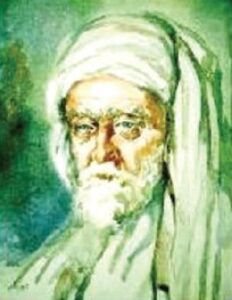 The supreme goal of the Sufi is to identify his will with the will of God and to be, body and soul, a place of divine manifestation. It is an ascetic way, where the fight against the passions, with the help of the heart, leads to ecstasy by a union with God, based on the mutual love mentioned in the Qur’an.
The supreme goal of the Sufi is to identify his will with the will of God and to be, body and soul, a place of divine manifestation. It is an ascetic way, where the fight against the passions, with the help of the heart, leads to ecstasy by a union with God, based on the mutual love mentioned in the Qur’an.
The generally accepted etymology derives the word Sufi from the Arabic word sûf which means “wool”. The word would refer to the custom of some religious men of wearing white woolen clothes and a coat and would, therefore, contain no reference to the spiritual doctrine which distinguishes the Sufis in Islam. It is most likely that the woolen clothing was already associated with spirituality in pre-Islamic times in Felix Arabia and elsewhere.
Sufism and inner purification
Sufism is not a theological and legal school which would be added to the four already existing schools (malekite, chafi’ite, Hanafite and Hanbalite). Nor is it a schism. It’s about an esoteric conception of the relationship of men to the world and to the divine entity. It is a method of inner improvement, of balance and a source of fervor deeply experienced and transforming. It is endless love of God and the realization of this love by an inner purification.
This quest for truth, strewn with efforts and doubts, requires an initiation and a renunciation of all that is not God. The goal of this esoteric spiritual approach is to achieve fusion with God. For this, the initiate performs a kind of deep introspection. This is an internalized devotion of the human being that implies the observance of strict rules and rites combined with individual experiences.
Far from the Islamic vulgate, Sufism is a school of tremendous humility, of limitless tolerance, and active solidarity. It is the experience of the ultimate union with God. The tasawûf is therefore the resolute march of a category of privileged people (khâssa), thirsty for God, moved by his grace for living only by and for him with respect for the Qur’ran and of the Sunnah, meditated, experienced and internalized.
Sufism is a way of love and knowledge. It is twofold :
- God’s love is the culmination of knowledge (ma’rifa) leading to the unveiling of the mystery (kashf) (according to the Persian poet al-Hallaj (858-922) and ar-Rumi, a Persian poet and Islamic scholar (1207-1273).)
- The intellectual manifestations of Sufism through external means such as: studies, prayers, rules, ablutions, purification, recitations (dikr), self-criticism, truth, poverty, renunciation, etc. (according to Ibn ‘Arabi, al-Junayd, Persian mystic, (830-910).)
Who was Ibn ‘Arabi?
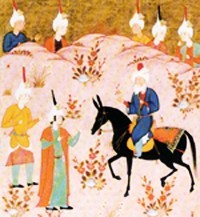 Among the most prominent sufi masters, we find Ibn Arabi, born in Murcia (Al-Andalus) in 1165. He came from an aristocratic family of learned scholars and intellectuals. In 1185, following a serious illness, he abandoned his literary career and made a nine-month mystical retreat under the direction of the spiritual master al-Urayni, originally from Portugal.
Among the most prominent sufi masters, we find Ibn Arabi, born in Murcia (Al-Andalus) in 1165. He came from an aristocratic family of learned scholars and intellectuals. In 1185, following a serious illness, he abandoned his literary career and made a nine-month mystical retreat under the direction of the spiritual master al-Urayni, originally from Portugal.
But this Andalusian of good family, soon gave up everything up in order to follow the Sufi Way, which would enrich him spiritually, with more than twenty years of spiritual life marked by overwhelming ecstatic visions. He went to the school of Sufi masters, traveling all over Andalusia, then to the Maghreb, to collect their teachings and immerse in their knowledge.
In the year 1200, Ibn ‘Arabi, left Al-Andalus definitely to sail East (al-Mashriq). This exceptional mystic and poet traveled thousands of kilometers, to Mecca and Anatolia, and at the same time produced a spiritual work of colossal dimensions and incredible texture, which was to deeply mark Universal Islam forever.
In 1202-1204, he went to Mecca, after having visited Egypt and the shrines of Jerusalem and Hebron. He wrote « The Interpreter of Ardent Desires » (dîwân, torjumân al-ashwâq), in memory of Nizam, the daughter of the sheikh who welcomed him in Mecca. In 1203-1233, he wrote the « Book of Spiritual Conquests of Mecca » (Kitâb al-futûHât al-Makkiyya), of which the original manuscript is kept intact today. In 1204, he received the initiation of the Sufi Ali ben Abd Allah ben Djami in Mosul, and wrote « The Book of Divine Theophanies » (Kitâb at-tajalliyât al-ilâhiyya). He settled permanently in Damascus in 1224, where he wrote « The Book of Gems of Wisdom » (Kitâb fusûs al-Hikam) in 1229.
Ibn ‘Arabi represents the Sufi tradition in all its purity, originality and universality. This great mystic believed that the primordial thing in the worldly existence is the place of the Creator in everyone’s life and his divine multiple manifestations. Ibn’Arabi is recognized in the tradition of Sufism as the « Great Master » (as-sheikh al-Akabar). He is the philosopher who undoubtedly best theorized the Oneness of God known in Islamic scholarship as TawHîd, recognizing the divine presence in any form and any image possible. Speaking about himself, he says:
“I am neither a prophet nor an envoy, I am simply an heir, someone who plows and sows the field of future life“.
Nevertheless, Ibn ‘Arabi gave himself the capacity to summon the prophets within the realm of “imaginary presences” considering himself as the equivalent of the respected Envoys of God (ar-rusûl).
A major reference in Sufism, Ibn ‘Arabi based his teachings strictly on the Qur’ran and the prophetic example i.e. as-Sunnah of the prophet Muhammad. In The Five Pillars of Islam, the thematic anthology of his masterpiece, « The Revelations of Mecca », he presents the inner meaning of the foundations of the Muslim religion: the profession of faith, prayer, fasting, the ritual alms and pilgrimage. A writing which illustrates that, far from the search for power and knowledge, now widespread for more political designs than spiritual ends, other visions of Islam are possible and more rewarding spiritually through humility and purity.
Ibn ‘Arabi’s works
 His scholarly works are of extreme variety and number. A Syrian researcher Osman Yahia listed them, excluding the abusive attributions, and found 856, 550 of which have come down to us and are attested by 2,917 manuscripts. Forty of his works have been translated to date in various world languages.
His scholarly works are of extreme variety and number. A Syrian researcher Osman Yahia listed them, excluding the abusive attributions, and found 856, 550 of which have come down to us and are attested by 2,917 manuscripts. Forty of his works have been translated to date in various world languages.
Let us remember his three best known works: The Book of Spiritual Conquests of Mecca or the Illuminations of Mecca, The Book of Divine Theophanies, and The Wisdom of the Prophets.
« The Book of Spiritual Conquests in Mecca or The 6 Stages of the Spiritual Journey »
The author began to write it in 1203 and it took him thirty years to finish it completely. The book, in its primitive design, consists of 560 chapters, divided into six main sections.
In this book Ibn ‘Arabi shows the fundamental unity of all sacred laws (the transcendent unity of religions) and each holds a share of truth. The diversity of religions is due to the diversity of relationships that God has with the world.
The six main sections of the Mecca Illuminations are:
1) The doctrines, has 73 chapters; it sets out the essential metaphysical and cosmological data which constitute the starting point and the goal of a spiritual itinerary.
2) Spiritual practices, has 116 chapters; it focuses on describing behaviors. Binary sequences of chapters analyze repentance and the abandonment of repentance, the invocation and the abandonment of invocation, sincerity and the abandonment of sincerity, and certainty and the abandonment of certainty. Abandonment is always seen as going beyond what is abandoned, despite the positive nature of the state reached.
3) The spiritual states, 80 chapters; it is about the fundamentally impermanent nature of any spiritual state that can be masked by the succession of states with some similarity. Sobriety, dilation, permanence are examples.
4) Spiritual residences, 114 chapters; these are the places where God descends to you, increasingly higher planes of consciousness.
5) Spiritual confrontation, 78 chapters; it is the meeting halfway between God and man at the exact point where the divine descent and the rise of the creature take place.
6) Spiritual stations, 99 chapters; this number identical to that of the Divine Names of God (Asmâ’ Allah al-Husnâ). These stations only exist through the material reality of the one who stands there.
The very conception of a ladder available to anyone who undertakes to climb the steps of the ascent to God is improper. The rungs of the ladder only appear when the aspirant steps on them and their distribution conforms to the predispositions of each being. This is why from one author to another, the hierarchy and the number of stations can vary. These are increasingly broad degrees of consciousness, were each station has a state and a set of spiritual expressions. At the end, perplexity, dazzled amazement, and nescience transcend all perfection.
These different parts are organically arranged: Ibn ‘Arabi lays down the doctrinal foundations (Science of Letters) which he considers necessary for the Sufi in his Ascent to the Real. This is the theoretical side of his vision of Being. Then he moves to the practices that the pilgrim must follow for his spiritual advancement and personal perfection. He describes the states through which the Sufi must pass and the events which he must face in his rise.
Then come the spiritual mansions, which are the places where the Beloved has left traces of his presence in this land of exile and suffering. The Sufi stops at these mansions for a few fleeting moments and finds comfort and consolation there.
Resuming his ascent, the spiritual knight goes towards confrontation, the meeting of the soul with his bridegroom, which is none other than the great fight that man must sustain to conquer the castle of the soul and the Lost Heaven.
Finally, the Sufi arrives at the higher spheres of his being, the last stage of perfection, where the pilgrimage of the spirit ends and existence ends.
This work is, therefore, based on human issues in its spiritual ascent and little room is left for theology.
The imaginary world of travel and poetry
We find in chapter 8 of the « Illuminations of Mecca » the description of a particular world, the imaginary world or intermediate world between the intelligible and sensitive worlds.
The Platonic tradition in Islam distinguishes three realities: ’âlam ’aqlî or intelligible world; ’âlam mithâlî or imaginary world; ’âlam Hissî or sensitive world.
This distinction is based on the recognition of “forms” specific to each of them, hierarchized according to three regions of being and knowing: intelligible forms, imaginary forms and sensitive forms.
As the French philosopher, theologist, Islamic studies expert and iranologist Henry Corbin (1903-1978) writes: « It was absolutely necessary to find a term that radically differentiated from the imaginary, the depths of the imaginary. […] » The Latin language came to rescue, and the expression mundus imaginalis is the literal equivalent of the Arabic ‘âlam al-mithâl, al-‘âlam al-mithâlî, “imaginal world.”
The imaginary world immaterializes the sensible forms (it takes them back to the source of their appearance), and it “imagines” the intelligible or archetypal forms (it gives them figure, dimension, rhythm and face).)
In summary, the imaginary ensures the reversible passage between the sensitive and the intelligible. It is the plan of the journey, of the passage.
This “Land of Reality” (ard al-haqîqa) was modeled, Ibn ‘Arabi tells us, from the surplus of Adam’s clay. In this spiritual land, where the bodies are of a subtle consistency while the intelligible takes a form there, one enters only through “his spirit“. These preliminary explanations are followed by the testimony of some spiritual travelers who have had the privilege of traveling to this prodigious region: 13 fantastic cities, lands of gold, silver, saffron, musk, fruits of incredible flavor, oceans of precious metals which join without mixing their waters.
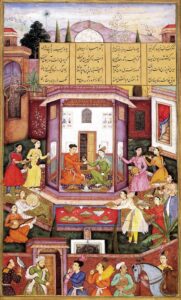 The “fantastic” character of these descriptions should not deceive us: this earth is just as real as the ground that our feet tread on. The mundus imaginalis is the place where the impossible becomes possible. This world of the imaginary is characterized by its exceptional expanse.
The “fantastic” character of these descriptions should not deceive us: this earth is just as real as the ground that our feet tread on. The mundus imaginalis is the place where the impossible becomes possible. This world of the imaginary is characterized by its exceptional expanse.
The stone vessel
The story that interests us in this eight chapter is that relating to the vessel made of stones, which sails on a sea of sand and land. In reality, Ibn ‘Arabi is talking about poetry here. Indeed, the poem is the equivalent of the vessel that sails on a sea of sand, that is to say, the meter in which the poem was molded. The meter is referred to in Arabic as bahr, that is to say « sea. » The words that make up the poem are the stones that make up the vessel.
Poetry is a privileged means to sail over the sea of supra-sensible realities in the mundus imaginalis. To confirm this point of view in poetry, Ibn ’Arabi insists on the eminently major role of poetry in the divine plan. Indeed, he declares that the rules of Arabic poetics were laid down by God. These rules are eloquence, harmony and symmetry.
“I saw in this world a sea of sand as fluid as water; I saw stones, small and large, mutually attracted one towards the other, like iron towards the magnet. …, they cannot be dissociated unless one intervenes directly, in the same way as one separates the iron from the magnet without it being able to oppose it. But, if one abstains from doing this, these stones continue to adhere to each other over a determined distance. When they are all united, this constitutes the shape of a ship. I myself saw {a formation} of a small boats when a ship is made up this way. The inhabitants put it in the water, then they embark to travel wherever they want. The ship’s floor is made of particles of sand or dust welded together in a specific way. I have never seen anything so wonderful as these stone vessels sailing on an ocean of sand! Boats have the same silhouette; the ship has two sides at the back of which stand two enormous columns higher than the size of a man. The ground of the ship aft is at the height of the sea on which it opens without a single grain of sand entering inside. ”
« The Book of Divine Theophanies or the Concept of Epiphanic Mirrors »
This work was written in Mosul, towards the end of the year 1204. In it, Ibn ‘Arabi developed his main idea concerning divine unity. To explain his thoughts, he chose the form of an imaginary dialogue with the great spiritual masters of the east who preceded him.
Since there is unity at the level of the Divine, there is necessarily unity at the level of Being. But then, what is the existential status of all that is other than God? He answers: these are the places of appearance of the Being, the forms where the divine reveals his existence, or if we take Ibn ‘Arabi’s favorite image, the epiphanic mirrors in which the glory of the Being is reflected, from the raw material to the highest intellect.
The multiplicity of created beings – which are the epiphanic places of Being – in no way alters the transcendental unity of Being in itself. The Divine manifests himself in different theophanic modes and there is a possible mutual approach between God and man.
« The Book of Gems of Wisdom or the Wisdom of the Prophets »
Composed in Damascus in 1230, this work presents the life and history of 27 biblical prophets cited in the Qur’ran, from Adam to Muhammad. This mysterious work has caused turmoil and violent reactions in the world of Islamic thought from the time of its publication until the present day.
Indeed, Ibn ‘Arabi’s attitude is simple but very daring. It illustrates his doctrine of monism and can be summarized as follows: if the presentation of the prophets in the Qur’an appears as a temporal religious interpretation, the presentation of these same characters in Ibn ‘Arabi appears as an ontological interpretation, that is to say that the author considers them in their metaphysical reality and not as historical and religious realities. Each prophetic word is like a particular expression of Divine Wisdom.
Final word
Ibn ‘Arabi’s work is not easily understood. First of all, by its scale. Then by its difficulty: brewing Greek philosophers (notably Plato, which earned him the nickname of Ibn Aflatûn, « the son of Plato ») and contemporary readings of these, mystical poems and theological works, he delivers texts kneaded by reference and often deliberately written as puzzles that the reader will have to solve. The very titles of these works are more poetic than philosophical: let us cite Mawaqi’ an-Nujûm, « The setting of the stars, » or even the Kitâb inshâ’ ’ad-dawa’îr al-iHatiyya, « The production of circles. »
Ibn ‘Arabi identifies three modes of access to God. That of shari’a which consists in applying to the letter the precepts reported by the Qur’an, the sunnah and the Hadith. It is the most common way, the least difficult, but, also, the least satisfactory because one comes only to an indirect knowledge of God, direct knowledge having to wait for death. The path of Haqîqa, metaphysical truth, is that of philosophers who try to understand causes and effects. Finally, the way of tarîqa (the way) is the spiritual and exoteric way which alone can lead to the “realization of the Truth in the heart of the believer”. This mystical path is not strictly speaking irrational for Ibn ‘Arabi, because precisely it allows the mind to escape from itself, to go beyond carnal reason (the nafs) and its limits, to reach God.
The great medical philosophers (Ibn Rushd/Averroès, Ibn Sina / Avicenna and Maimonides) made the study of phenomena as a way of knowing God, thus combining science and faith. Ibn ‘Arabi partly takes up this heritage, but shifts the stakes: God created the world, and manifests himself in all creatures. “The world is a mirror for God” he writes. Ibn ‘Arabi therefore does not oppose the scientific approach of Averroes (unlike Al-Ghazalî), but considers it to be incomplete, falling under the Haqîqa. So that the perfect believer is no longer the one who seeks to elucidate phenomena in order to know God better, but the one who understands that the world is only a mirror, and therefore that phenomena are only reflections of God. While the philosopher studies the works of God, the mystic “sees God at work” writes Ibn ‘Arabi.
Bibliography (Primary Texts):
Texts by Ibn ‘Arabî
‘Anqâ mughrib fî khatm al-awliyâ’ wa shams al-maghrib, G. T. Elmore (trans.), Islamic Sainthood in the Fullness of Time: Ibn al-‘Arabî’s Book of the Fabulous Gryphon, Leiden : E. J. Brill, 1999.
Fusûs al-hikam, A. ‘Afîfî (ed.), Beirut: Dâr al-Kutub al-‘Arabî, 1946.
Fusûs al-hikam, Binyamin Abrahamov (trans.), Ibn al-‘Arabî’s Fusûs al-hikam : An Annotated Translation of “The Bezels of Wisdom”, London : Routledge, 2015.
Fusûs al-hikam, R. W. J. Austin (trans.), Ibn al’Arabî : The Bezels of Wisdom, Ramsey : Paulist Press, 1981.
Fusûs al-hikam, C. K. Dagli (trans.), The Ringstones of Wisdom, Chicago: Kazi, 2004.
al-Futûhât al-makkiyya, Cairo, 1911; reprinted, Beirut: Dâr Sâdir, n.d.
al-Futûhât al-makkiyya, 14 volumes, O. Yahia (ed.), Cairo: al-Hay’at al-Misriyyat al-‘Âmma li’l-Kitâb, 1972–91.
al-Futûhât al-Makkiyya : Textes choisis/Selected Texts, M. Chodkiewicz, W. C. Chittick, C. Chodkiewicz, D. Gril, and J. Morris (trans.), Paris : Sindbad, 1989; also available as The Meccan Revelations, 2 vols., New York : Pir Press, 2002–4.
al-Futûhât al-makkiyya, Chapter 167, L’alchimie du bonheur parfait, S. Ruspoli (trans.), Paris : Berg International, 1997.
Inshâ’ al-dawâ’ir, in H. S. Nyberg, Kleinere Schriften des Ibn al-‘Arabî, Leiden : E. J. Brill, 1919.
Inshâ’ al-dawâ’ir, “The Book of the Description of the Encompassing Circles”, P. B. Fenton and M. Gloton (trans.), in Muhyiddin Ibn ‘Arab i : A Commemorative Volume, Hirtenstein, S. and M. Tiernan (eds.), Shaftesbury : Element, 1993, pp. 12–43.
al-Isfâr ‘an natâ’ij al-asfâr, D. Gril (ed. and trans.), Le dévoilement des effets du voyage, Combas : Editions de l’Éclat, 1994.
Ittihâd al-kawnî : The Universal Tree and the Four Birds, Angela Jaffray (trans.), Oxford : Anqa, 2006.
Kitâb kashf al-ma‘nâ ‘an sirr asmâ’ Allâh al-husnâ, P. Beneito (ed. and trans.), El secreto de los nombres de Dios, Murcia : Editora Regional de Murcia, 1997.
Mashâhid al-asrâr al-qudsiyya, S. Hakim and P. Beneito (ed. and trans.), Las Contemplaciones de los Misterios, Murcia: Editora Regional de Murcia, 1994.
Mashâhid al-asrâr al-qudsiyya, P. Beneito and C. Twynch (trans.), Contemplation of the Holy Mysteries, Oxford: Anqa, 2001.
Other Primary Texts:
Avicenna (Ibn Sînâ), al-Najât, M. S. al-Kurdî (ed.), Cairo: Matba‘at al-Sa‘âda, 1938.
–––, al-Shifâ’ : The Metaphysics of The Healing : A Parallel English-Arabic Text, M. E. Marmura (ed. and trans.), Provo : Brigham Young University Press, 2005.
Mullâ Sadrâ, 2008, Spiritual Psychology: The Fourth Intellectual Journey in Transcendent Philosophy, tr. Latimah-Parvin Peerwani, London: ICAS Press.
Qûnawî, Sadr al-Dîn, al-Fukûk, M. Khwâjawî (ed.), Tehran: Mawlâ, 1992.
–––, al-Murâsalât : Annäherungen : Der mystisch-philosophische Briefwechsel zwischen Sadr ud-Dîn-i Qônawî und Nasîr ud-Dîn-i Tûsî, G. Schubert (ed.), Beirut : Franz Steiner Verlag, 1995.
–––, al-Nafahât al-ilâhiyya, M. Khwâjawî (ed.), Tehran: Mawlâ, 1996.
–––, “al-Nusûs : The Texts,” William C. Chittick (trans.), An Anthology of Philosophy in Persia, vol. 4 : From the School of Illumination to Philosophical Mysticism, S.H. Nasr and M. Aminrazavi (ed.), London : I.B. Tauris, 2012, pp. 416–34.


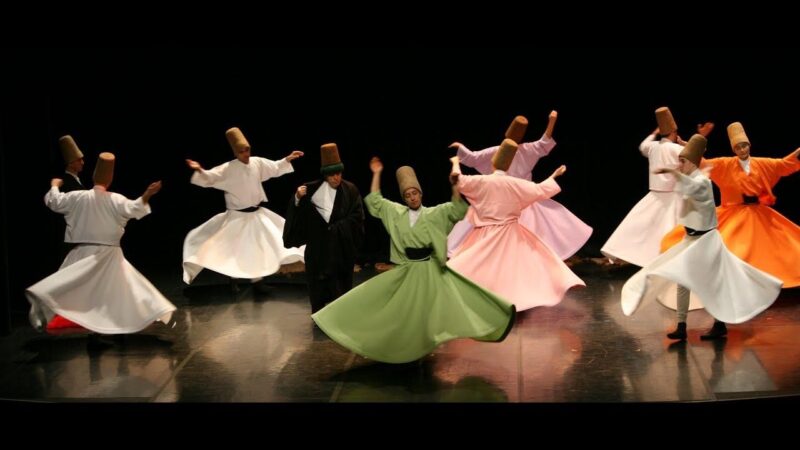
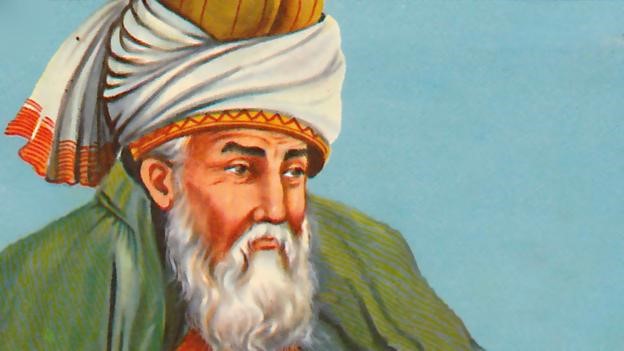
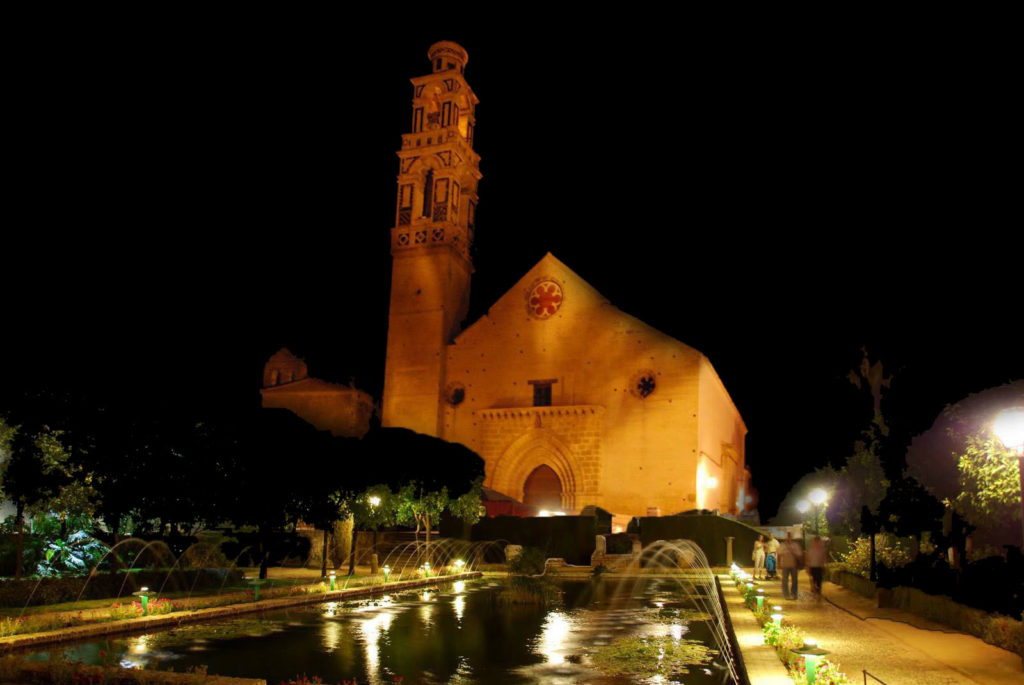

 Audiobook
Audiobook




